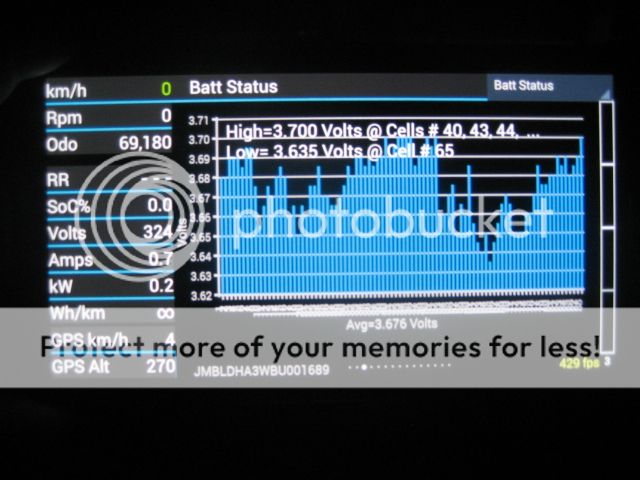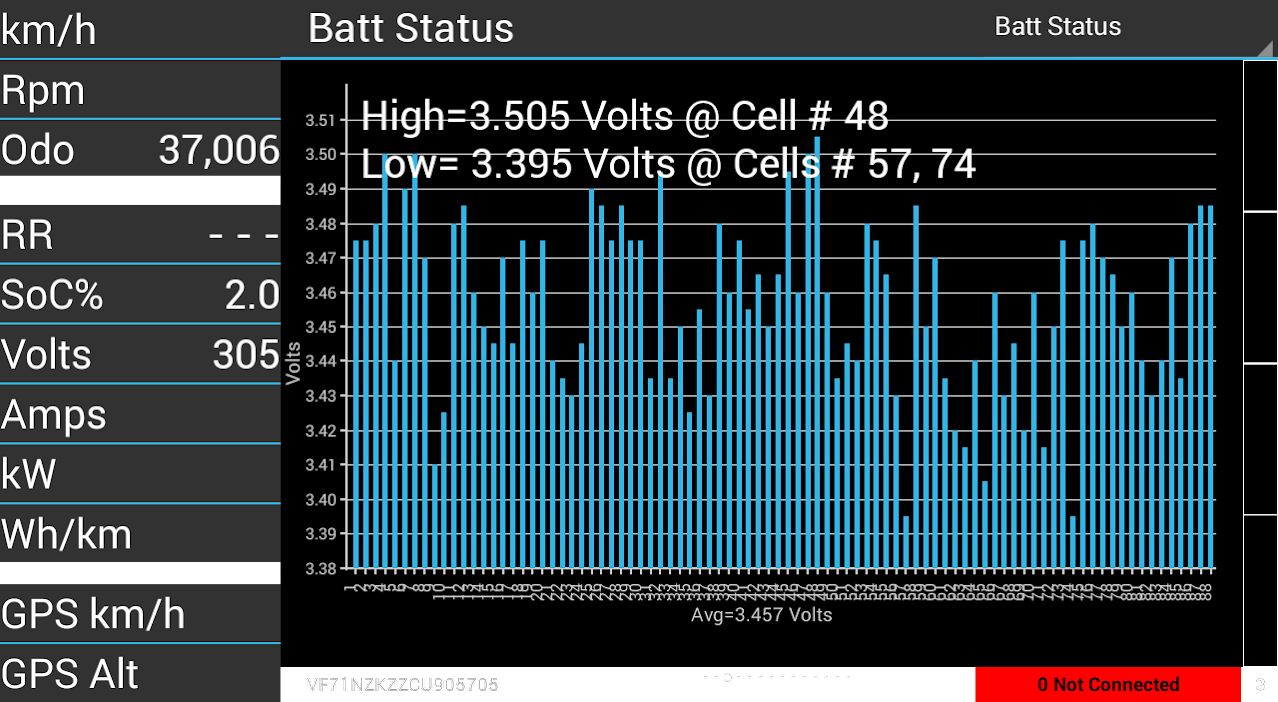Malm
Well-known member

So, 324 total voltage but 0,0% SoC. Weakest cell at 3,635 V (so far from the lowest limit, 2,75V, but 0,0% SoC).
In my opinion, in the reality, it has more then 10% SoC left (more then 10 km) but don't let me do even one meter.
Why, I told you many times before, my i-MiEV simple fails in getting correctly its SoC sometimes.
This, total voltage of 324 V and 0,0% SoC, only me and my i-MiEV can show. Because it only do this if some conditions happen at the same time (and I know how to gather those conditions). One of them is to have a car that thinks its capacity is 10% lower then it really is.




